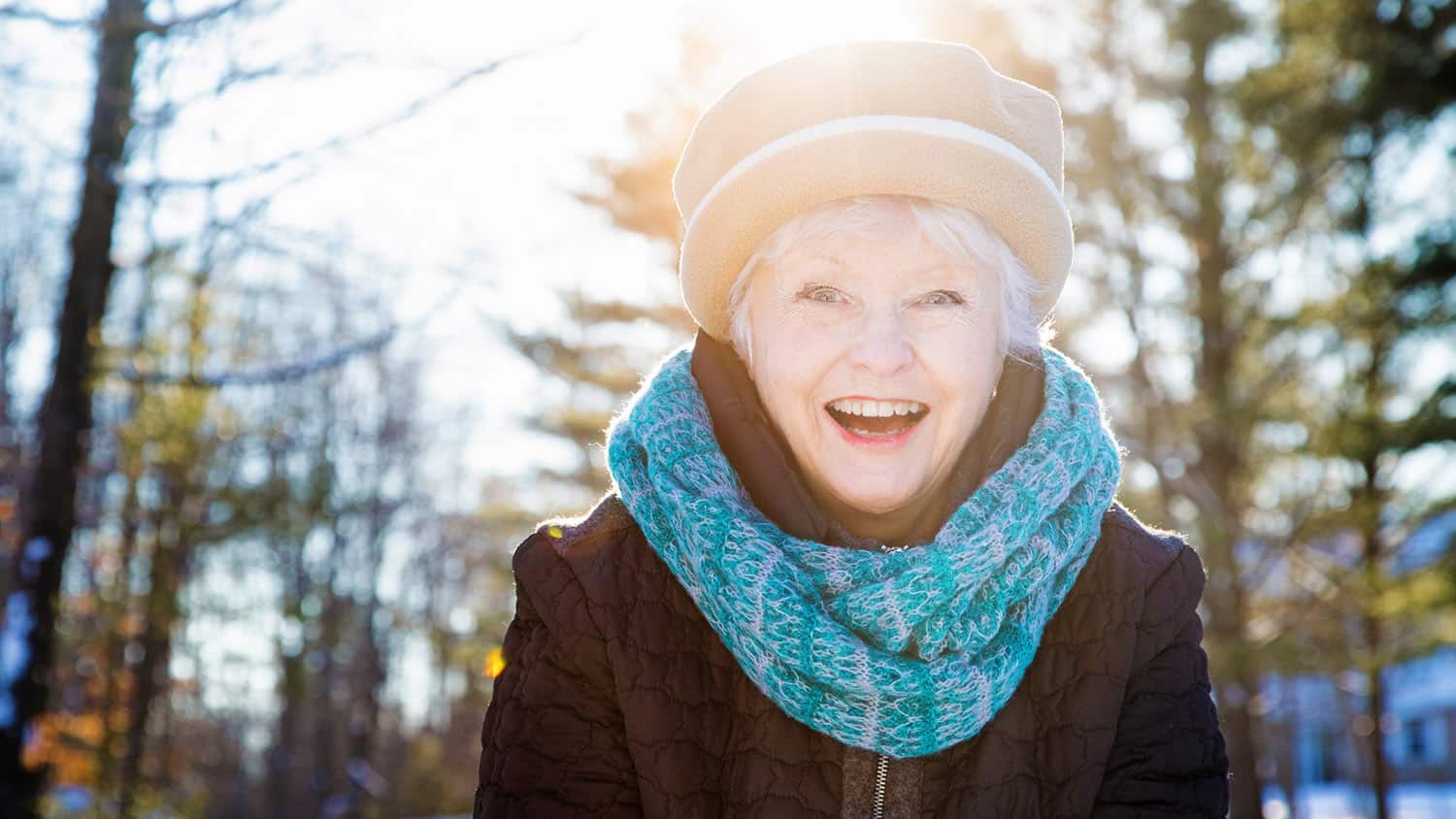
While a cool brisk morning might signal an exciting change in seasons, for older adults who suffer from arthritis it can also lead to painful joint stiffness and inflammation. Why does colder weather seem to amplify aches and pains?
Research suggests it’s actually the drop in atmospheric (barometric) pressure when inclement weather moves in, especially during the fall and winter, that worsens joint pain.
That change in pressure can stress vulnerable joints, even to a point where people with arthritis feel like they can predict rain and cold weather moving in simply by their sensation of pain. Sound familiar?
Don’t let fall and winter weather keep you from doing the activities you love. Check out these 6 top tips for preventing and managing arthritis pain in cold weather.
Wear Layers
Layers play an important role in helping you stay warm, especially when spending extended periods of time outdoors in cooler weather.
Tight, clingy clothing, however, can make it more difficult to move, particularly for folks with a limited range of motion due to joint tightness. Wearing loose layers of less breathable fabrics (not cotton) instead will help you retain body heat as well as move around and stay active.
Remember Gloves, Hats and Scarves
One of the most shocking things about hypothermia is that you don’t have to be in below freezing temperatures to experience it.
Prolonged exposure to cooler temperatures – combined with moisture – can cause your body to lose body heat fast, especially from extremities like the nose, toes and fingers.
Keep your body parts protected at all times by wearing warm gloves, thick socks, hats that cover your ears and scarves around your neck when you go outside in cold weather.
Wear Waterproof Shoes
Nothing exacerbates cold sensitivity quite like being cold and wet. Especially during winter weather conditions including ice, snow or freezing rain, it’s critical to wear waterproof shoes/boots to keep your feet dry and warm.
Cramped, painful, arthritic feet tend to inhibit your mobility and can increase the risk of experiencing a debilitating fall. If you are exercising outside, say on a fall hike or bike ride, make sure your sneakers offer water resistance to keep you from losing critical body heat through your feet.
Stick with Exercise
It might seem much more inviting to curl up by a warm fire with a good book than to don workout clothes and get your routine exercise in, but physical activity is even more important during the fall and winter months.
Heart-pounding exercise can help warm your body, loosen stiff joints and relieve muscle tension – all things which aid pain relief. Orthotic aids can help keep arthritis sufferers moving, like ankle braces or knee sleeves.
The best knee sleeves offer compression, stabilization and support, in addition to actively wicking away moisture. Find indoor activities to keep you busy during cold weather months, like yoga, strength training, swimming or walking on a treadmill.
Eat Warming Foods
Foods with thermogenic properties, or the ability to raise your body temperature, can be beneficial for fighting arthritis inflammation anytime, but seem even more apt in cold weather.
Ginger, turmeric and cayenne are commonly referred to spices for naturally combating arthritis inflammation, while other foods like citrus fruits (oranges and lemons) have been shown to exhibit vasodilation properties.
Relaxed and expanded blood vessels tend to let more blood flow through, increasing body temperature little by little.
Get a Massage
Wondering what to ask for Christmas this year? Consider dropping hints to your significant other about getting a massage!
The Arthritis Foundation shares that massage therapy can be powerfully effective when it comes to pain reduction. In addition to easing muscle tension, massage can make stiff joints more pliable, boost blood circulation, and even trigger serotonin release in the brain.
During winter, consider asking for heat applications with your massage including hot stones or warming lotions.
What type of weather seems to worsen your joint pain? What are some other things you do to combat arthritis pain during the fall and winter? Please join the conversation below!
